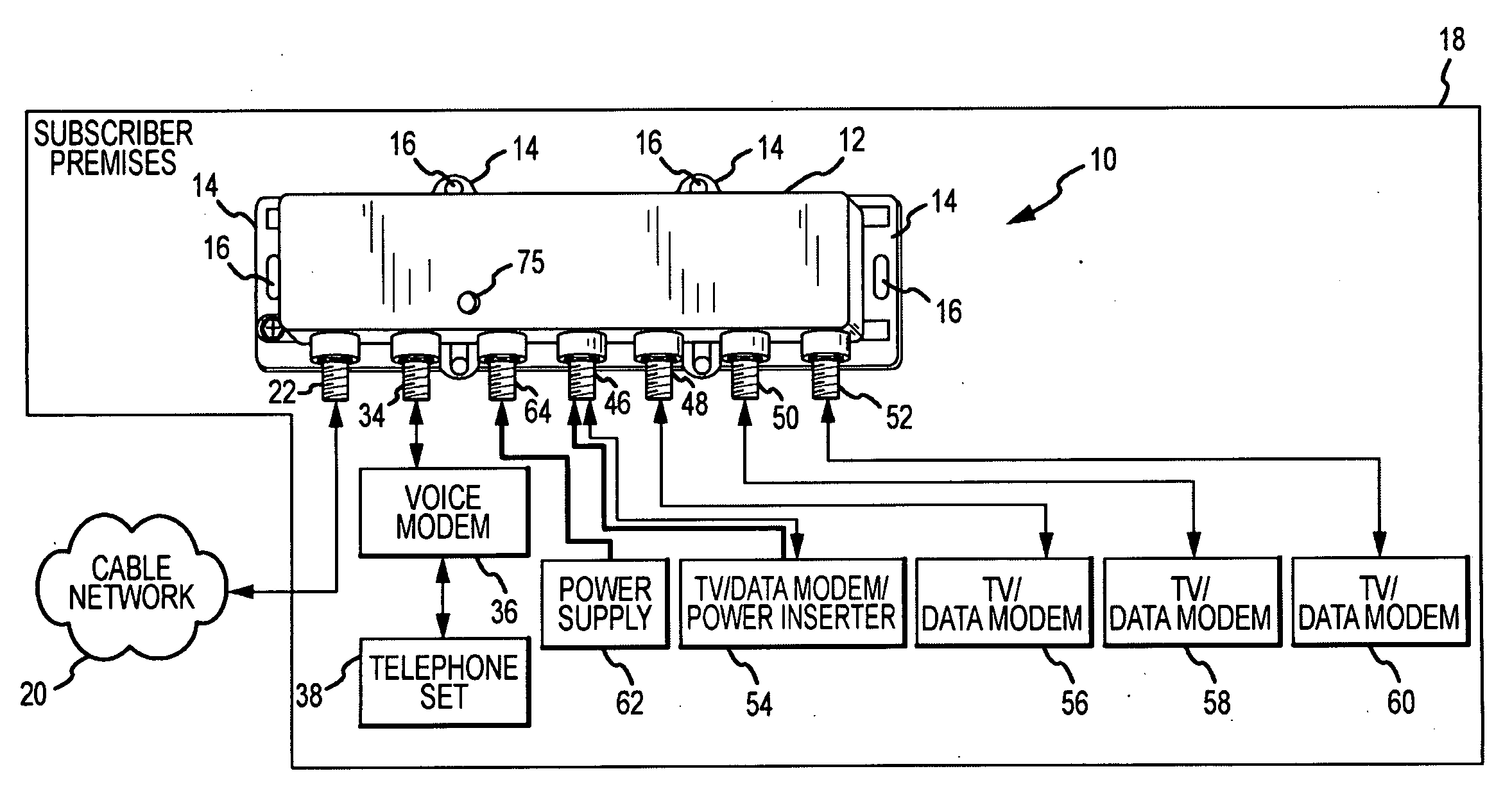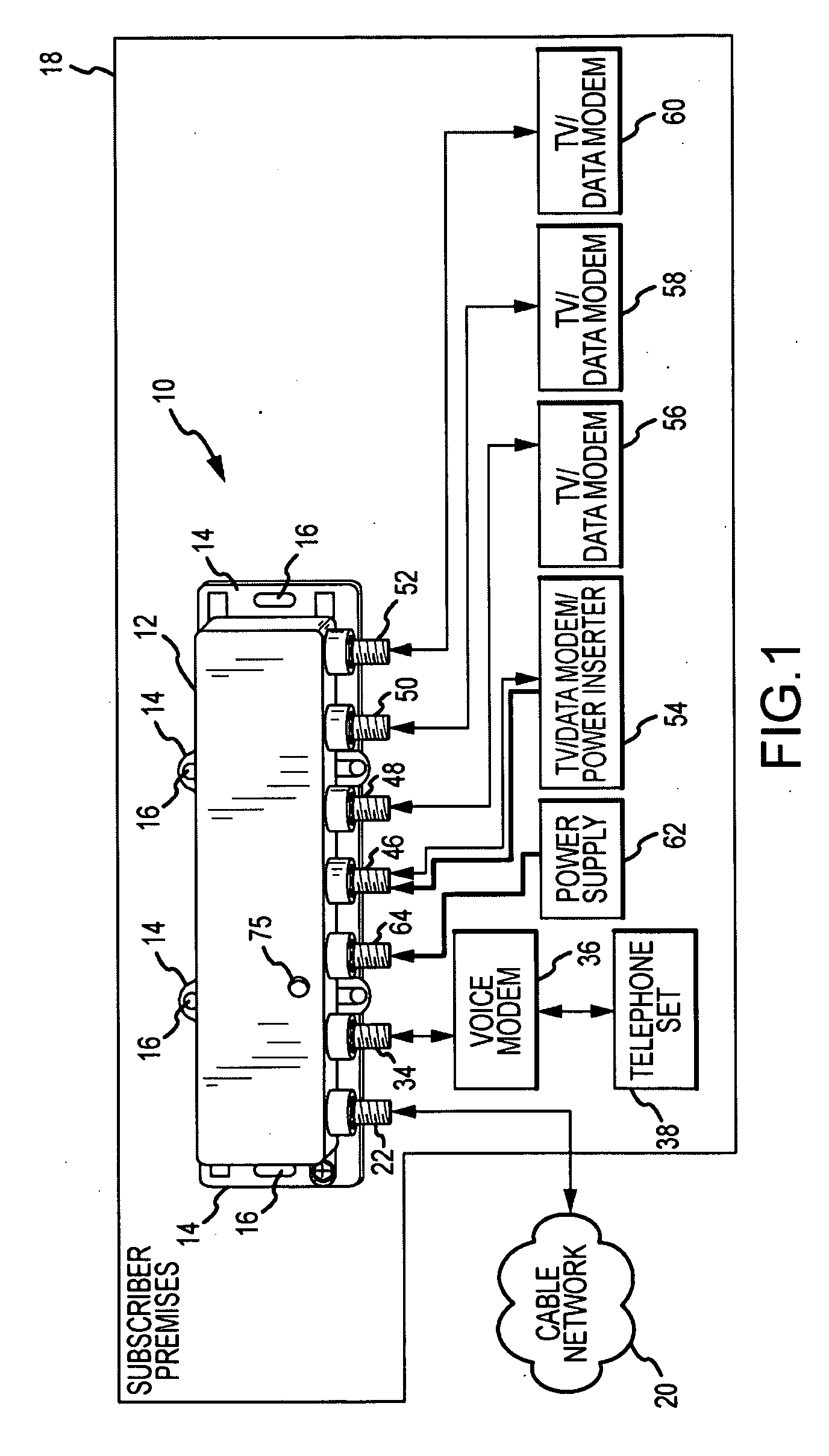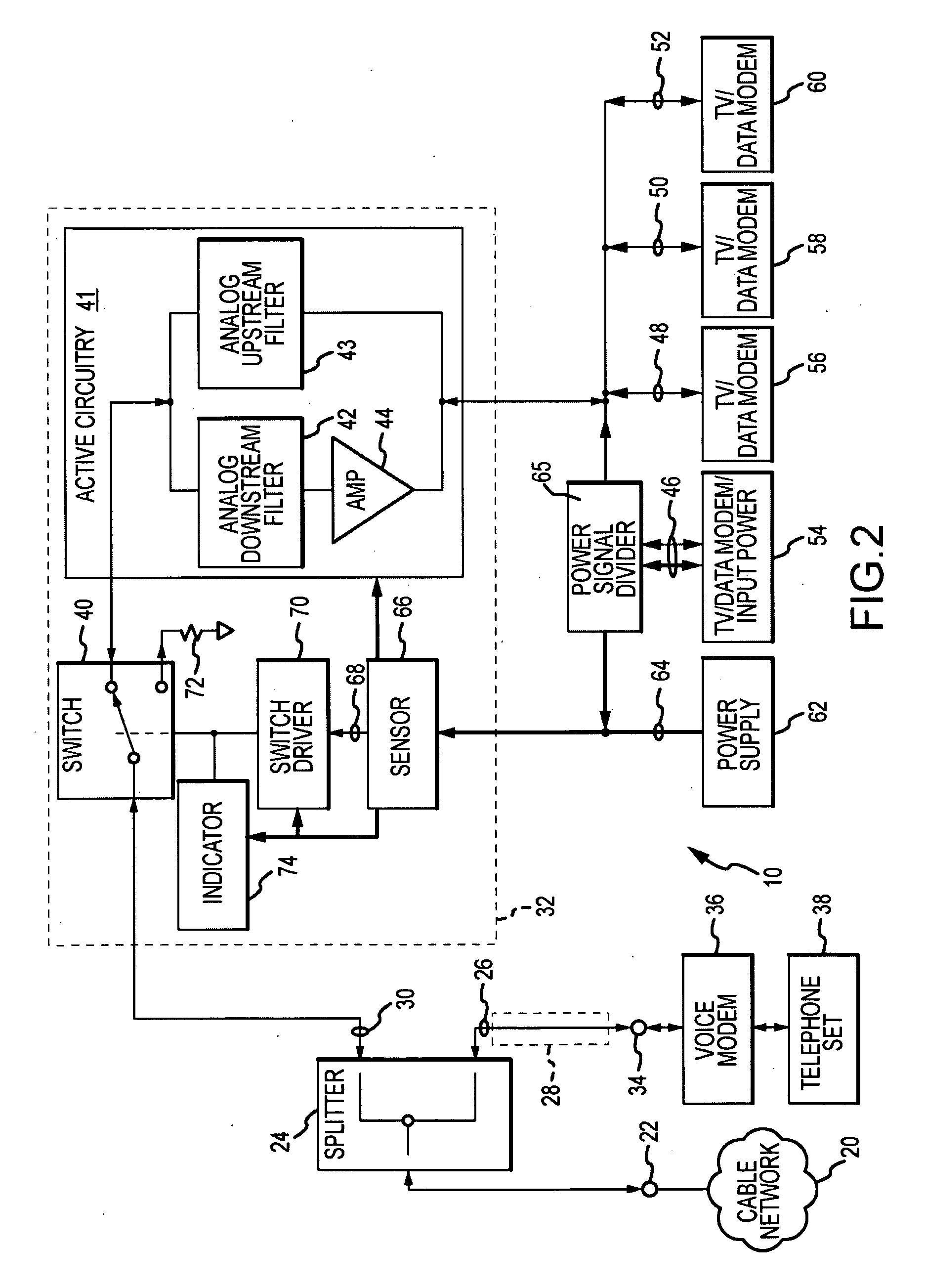Passive-Active Terminal Adapter and Method Having Automatic Return Loss Control
a terminal adapter and passive technology, applied in the field of passive active terminal adapters and methods having automatic return loss control, can solve the problems of excessive return loss, inability or problematic to properly function passive subscriber devices such as telephone sets, and degrading the quality of service received by subscribers, so as to prevent or minimize reflected signals, prevent or minimize return loss, and minimize the amount of return loss
- Summary
- Abstract
- Description
- Claims
- Application Information
AI Technical Summary
Benefits of technology
Problems solved by technology
Method used
Image
Examples
Embodiment Construction
[0019]A passive-active terminal adapter 10 which incorporates the present invention is shown in FIG. 1. The terminal adapter 10 includes a housing 12 which encloses active and passive internal electronic circuit components (shown in FIGS. 2 and 3). A mounting flange 14 surrounds the housing 12, and holes 16 in the flange 14 allow attachment of the terminal adapter 10 to a support structure at a subscriber's premises 18. Downstream high-frequency signals are supplied from a headend (not shown) of a cable network 20, such as a cable television (CATV) network, and the downstream signals are delivered to the terminal adapter 10 at an input / output cable port 22 connected to the cable network 20.
[0020]The passive and active internal electronic circuit components within the housing 12, shown in FIG. 2, include a conventional directional coupler or signal splitter 24 which separates the input downstream signals from the cable network 20 at the cable port 22 into a passive branch downstream ...
PUM
 Login to View More
Login to View More Abstract
Description
Claims
Application Information
 Login to View More
Login to View More - R&D
- Intellectual Property
- Life Sciences
- Materials
- Tech Scout
- Unparalleled Data Quality
- Higher Quality Content
- 60% Fewer Hallucinations
Browse by: Latest US Patents, China's latest patents, Technical Efficacy Thesaurus, Application Domain, Technology Topic, Popular Technical Reports.
© 2025 PatSnap. All rights reserved.Legal|Privacy policy|Modern Slavery Act Transparency Statement|Sitemap|About US| Contact US: help@patsnap.com



